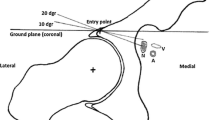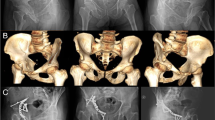Abstract
The petals ofAconitum were classified into six types. Type I: the labium tubular at the base and no appendage inside. Type II: a lambda (A)-shaped enation present inside the limb. The upper part of the enation is situated at the lower edge of the spur mouth and both wings of the enation extend to margins of the labium. Type III resembles type II but both wings do not extend to the margins. Type IV: a small flap attached at the lower edge of the spur mouth. Type V: two auriculate appendages present on both lateral walls of the labium. Type VI: without inside appendage. Most species of sect.Lycoctonum have type I petal and those of sect.Aconitum have type V petal. Type I is distinctly cup-shaped or peltate with a well developed cross zone or adaxial wall and type II is a modification of type I. Type VI is distinctly flat or epeltate without the cross zone. Others are intermediate between cup-shaped and flat or peltate and epeltate types. Based on the observation of petal ontogeny onA. pterocaule var.glabrescens, A. vulparia andA. japonicum var.eizanense, the relation among these types was explained by the partial or total reduction of the adaxial meristematic regions.
Similar content being viewed by others
Explore related subjects
Discover the latest articles and news from researchers in related subjects, suggested using machine learning.References
Hiepko, P. 1965. Vergleichend-morphologische und entwicklungsgeschichtliche Untersuchungen über das Perianth bei den Polycarpicae. Bot. Jahrb. Syst.84: 359–508.
Leinfellner, W. 1958 Beiträge zur Kronblattmorphologie VIII. Der peltate Bau der Nectarblätter vonRanunculus, darleget an Hand jener vonRanunculus pallasii Schlecht. Oesterr. Bot. Z.105: 184–192.
Payer, J.B. 1857. Traité d'Organogénie Comparée de la Fleur. Librairie de Victor Masson, Paris.
Prantl, K. 1887. Beiträge zur Morphologie und Systematik der Ranunculaceen. Bot. Jahrb. Syst.9: 225–273.
Schrödinger, R. 1909. Der Blütenbau der zygomorphen Ranunculaceen und seine Bedeuting für die Stammesgeschichte der Helleboreen. Abh. K. K. Zool.-Bot. Ges. Wien.4–5: 1–63.
Tamura, M. 1965. Morphology, ecology and phylogeny of the Ranunculaceae IV. Sci. Rep. Osaka Univ.14: 53–71.
— 1966. Morphology, ecology and phylogeny of the Ranunculaceae VI. Sci. Rep. Osaka Univ.15: 13–35.
Wang, W.T. andP.K. Hsiao. 1965 Notulae de Ranunculaceis Sinensibus II. Acta Phytotax. Sin. Addit.1: 49–103.
Author information
Authors and Affiliations
Rights and permissions
About this article
Cite this article
Kosuge, K., Tamura, M. Morphology of the petal inAconitum . Bot Mag Tokyo 101, 223–237 (1988). https://doi.org/10.1007/BF02488601
Received:
Accepted:
Issue Date:
DOI: https://doi.org/10.1007/BF02488601




